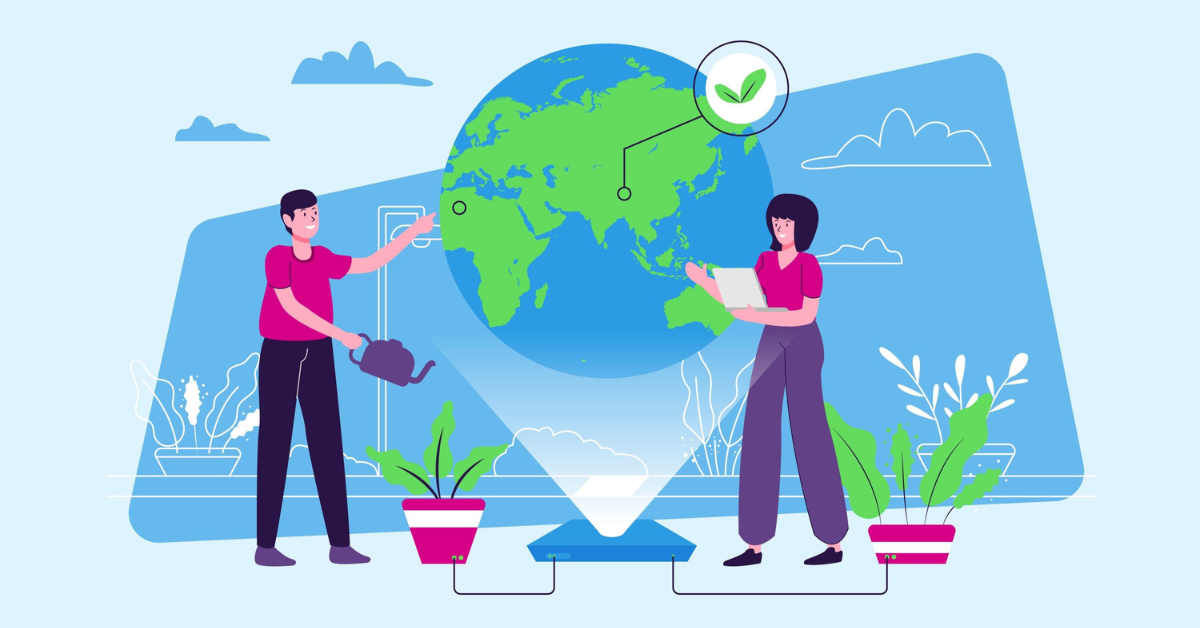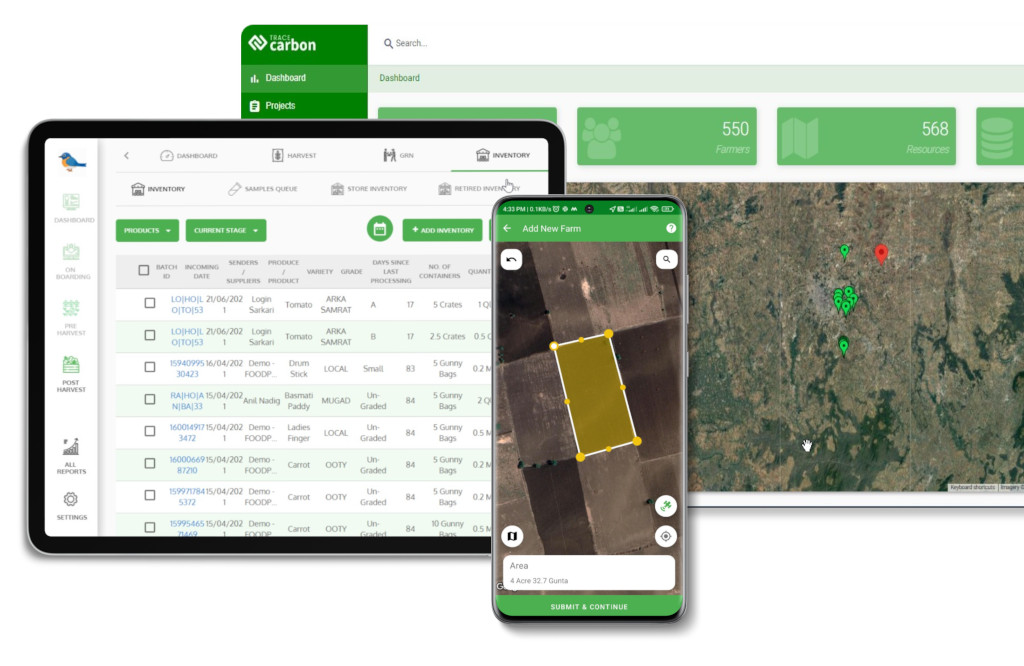Contact: +91 99725 24322 |
Menu
Menu
Quick summary: Discover the 10 must-have features your EUDR compliance solution should have. From traceability and geospatial mapping to risk assessment and real-time reporting, learn how to streamline compliance for sustainable supply chains.

The clock is ticking for businesses that deal with regulated commodities like soy, palm oil, cocoa, and beef. With the EU Deforestation Regulation (EUDR) set to take full effect this year end, companies must now prove that their supply chains are deforestation-free—or face hefty fines, supply chain disruptions, and potential market bans. A robust EUDR compliance solution isn’t just a regulatory checkbox—it’s the key to ensuring seamless traceability, mitigating risks, and securing long-term market access.
Don’t wait until it’s too late—EUDR compliance isn’t optional. Get ahead of the curve and ensure your business is ready for the challenges and opportunities that lie ahead
Yet, many businesses are struggling with fragmented data, opaque supply chains, and manual compliance processes that make EUDR adherence a logistical nightmare. So, what should an ideal solution include? Here are the 10 must-have features to look for in an EUDR compliance platform.
Key Takeaways
The EU Deforestation Regulation (EUDR) is changing the way businesses operate. If you’re dealing with soy, palm oil, cocoa, coffee, rubber, wood, or beef, you now need to prove that your supply chain is deforestation-free. This isn’t just another regulation—it’s a game-changer for businesses that want to continue selling in the EU market.
But compliance isn’t easy. The requirements are strict: you must track every stage of your supply chain, collect geolocation data for sourcing areas, and submit detailed due diligence reports. Failing to comply? That could mean fines, shipment rejections, and reputational damage that can hurt your business in the long run.
Ignoring EUDR isn’t an option. If your supply chain lacks transparency or if your suppliers can’t provide verifiable, deforestation-free sourcing data, you risk:
With growing consumer demand for sustainably sourced products, compliance isn’t just about avoiding fines—it’s about staying competitive and future-proofing your business.
Manually tracking supply chains is a nightmare—too much data, too many suppliers, and not enough transparency. This is where a robust EUDR compliance solution makes all the difference.
A digital compliance platform can:
Navigating the EU Deforestation Regulation (EUDR) can be a daunting task for businesses involved in high-risk commodities like cocoa, coffee, palm oil, and beef. EUDR demands stringent due diligence and traceability across your entire supply chain, but the right compliance solution can make it much easier. Here are the 10 must-have features to look for in your EUDR compliance solution to help you meet these requirements efficiently.
EUDR requires businesses to track every product and raw material from its origin all the way to the final product. End-to-end traceability ensures that no raw material is sourced from illegal deforestation areas, offering transparency at every step.
How technology helps:
By using blockchain and digital ledger technologies, your data becomes immutable, making it tamper-proof and verifiable at every stage. Blockchain helps you trace products, ensuring transparency and compliance across your entire supply chain.
One of the key requirements of EUDR is proving that the raw materials you source aren’t linked to deforestation. Real-time land-use monitoring through geospatial mapping and satellite technology can help identify deforested areas and ensure compliance with deforestation-free sourcing.
How technology helps:
Geospatial technology uses satellite data to monitor land use and map deforestation activities. This helps assess the risk of sourcing from high-risk areas and allows you to make data-backed sourcing decisions.
Manual data collection is not only time-consuming but can also lead to errors. With automated data collection, you can ensure accurate, real-time data and compliance without the risk of human error.
How technology helps:
User-friendly mobile apps allow for real-time data capture right from the field or manufacturing site. Whether it’s logging raw material sources, key data elements (KDEs), or tracking critical events (CTEs), mobile apps make it easy for on-the-ground personnel to record information directly into the system. This immediate entry ensures data is available instantly for validation, reducing delays and errors in the supply chain.
Chances are, you already use ERP systems, procurement tools, and sustainability platforms. You need a compliance solution that works seamlessly with these systems to avoid data silos and unnecessary duplication of efforts.
How technology helps:
A great compliance solution should feature API-driven connectivity, allowing easy integration with your existing systems. This ensures smooth data flow between platforms, minimizing manual data entry and saving time.
EUDR compliance is just one of many regulations your company may need to adhere to. With regulatory landscapes evolving globally, a robust compliance solution needs to keep pace with changes in laws like the UK Environment Act and the US FOREST Act.
How technology helps:
Your solution should be pre-built to align with EUDR’s due diligence processes, with the ability to easily adapt to new global deforestation laws, making it future-proof and reducing the complexity of compliance.
Understanding the risk your suppliers bring is crucial for compliance and sustainability. AI-driven risk profiling helps you evaluate potential risks in your supply chain by analyzing historical data, geographical information, and the environmental impact of suppliers.
How technology helps:
Automated documentation collection and workflow management tools allow for real-time supplier evaluation and ensure due diligence is always up to date, making it easier to manage multiple suppliers across different regions.
Why it’s essential:
Tracking carbon footprints and deforestation is not just about compliance; it’s about demonstrating your company’s commitment to sustainability. Digital MRV tools provide the data needed for accurate sustainability reporting.
How technology helps:
MRV tools enable you to track and report carbon emissions, land-use changes, and deforestation activities in real-time. This helps you stay on top of your environmental impact and ensure compliance with reporting standards.
Transparency and data security are fundamental when sharing information with partners, regulators, and auditors. You need a platform that facilitates secure collaboration and ensures that sensitive data remains protected.
How technology helps:
By using permissioned blockchain networks, your data remains secure and only accessible to the appropriate parties. This enhances trust across the supply chain and provides verifiable audit trails for regulators.
User-friendly dashboards make it easy for your team to track progress, monitor compliance, and generate reports quickly.
How technology helps:
With customizable dashboards, compliance officers can view real-time data, monitor key metrics, and access compliance status across the supply chain. Automated reporting ensures you have the necessary documentation for audits and regulatory submissions, without the stress.
As your business grows, your compliance needs will evolve. A scalable solution allows you to expand your operations without having to overhaul your entire system.
How technology helps:
Cloud-based solutions ensure that your EUDR compliance platform is flexible and can adapt to regulatory changes or supply chain expansions. Whether you’re entering new markets or dealing with more complex supply chains, a scalable solution can grow with you.
EUDR compliance doesn’t have to be overwhelming. With the right solution that includes end-to-end traceability, geospatial monitoring, automated data collection, and robust reporting, you can ensure compliance and boost your supply chain transparency. Keep your business ready for evolving regulations and showcase your commitment to sustainable sourcing.
TraceX’s EUDR Compliance Platform is designed to help businesses navigate the complexities of the EU Deforestation Regulation (EUDR), ensuring their supply chains are deforestation-free and fully compliant with European laws. The platform leverages cutting-edge technology like blockchain, satellite monitoring, and geospatial mapping to provide end-to-end transparency and traceability, which are critical for compliance.

By adopting the TraceX EUDR Compliance Platform, businesses can ensure they’re taking the necessary steps to eliminate deforestation from their supply chains while meeting all regulatory requirements, improving operational efficiency, and supporting sustainable sourcing practices.
To stay ahead of the curve and minimize risks, selecting the right EUDR compliance solution is crucial. The features outlined—ranging from end-to-end supply chain traceability to real-time satellite monitoring and automated data collection—ensure that businesses can meet stringent due diligence requirements while enhancing operational efficiency. By choosing a solution that combines transparency, automation, and scalability, companies can secure their supply chains, reduce compliance risks, and support sustainability goals.
The EUDR is a set of regulations aimed at ensuring that goods placed on the EU market do not contribute to deforestation. It requires businesses to track and verify the source of raw materials like cocoa, soy, coffee, and palm oil to confirm they are deforestation-free.
TraceX’s platform offers essential features like blockchain-based traceability, satellite monitoring, and automated data collection, helping businesses track their supply chain, ensure deforestation-free sourcing, and meet EUDR’s due diligence requirements.
Data integrity is crucial to meeting EUDR compliance because it ensures the accuracy and authenticity of sourcing information. Automated data verification and blockchain technology help eliminate fraud and provide stakeholders with reliable, verifiable data at every point in the supply chain.
